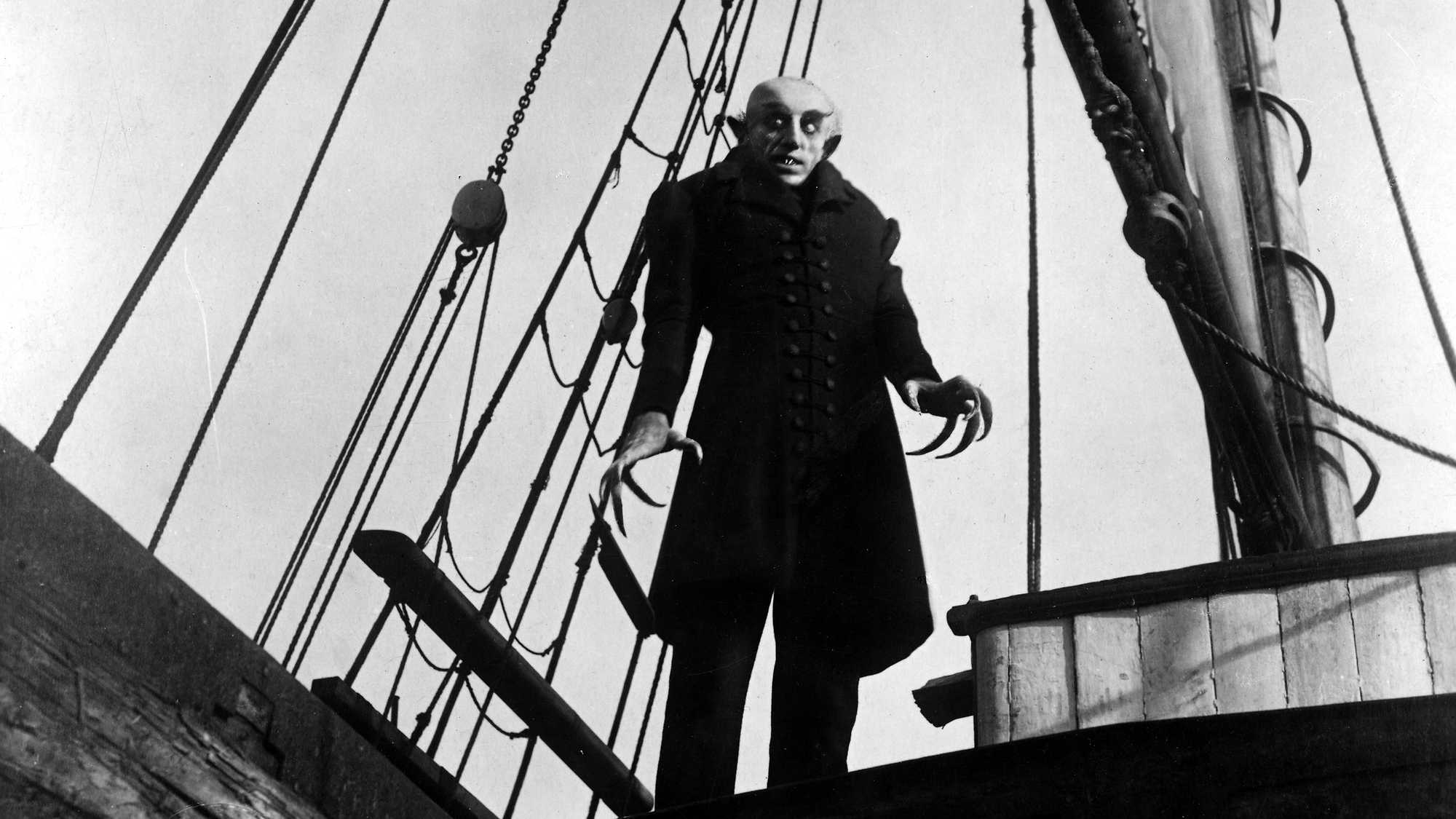The Festival’s long-standing, popular and much-cherished collaboration with the Auckland Philharmonia Orchestra ventures into the twilight zone for a rare Live Cinema screening of F.W. Murnau’s aptly titled Symphony of Horrors.

A masterpiece of the German silent cinema and easily the most effective version of Dracula on record.
Screened as part of NZIFF 2011
Nosferatu, a Symphony of Horrors 1922
Nosferatu, eine Symphonie des Grauens
Commissioned by the Cineteca di Bologna, in co-operation with the F.W. Murnau Stiftung in Wiesbaden, Timothy Brock has freely adapted the 1826 four-act opera, Der Vampyr, by the eminent German composer Heinrich Marschner (1795–1861), to create a compelling dramatic score for the Murnau classic. The print, from the British Film Institute collection, has been struck from the restoration by the Münchner Filmmuseum and the Cineteca di Bologna, and it replicates the tints and tones revealed in the nitrate original. — BG
“Nosferatu is the original Dracula movie and still, after 80 years, the scariest. If the film is not called ‘Dracula’, that is simply because Murnau and his screenwriter, Henrik Galeen, having failed to obtain the rights to Bram Stoker’s novel from his widow, calmly pinched the whole plot and changed the characters’ names. The resultant lawsuit rumbled on for years. Still, this piece of sharp practice can perhaps be forgiven, since it resulted in one of the greatest horror movies, not just of the silent screen, but of all time.
The special effects, of course, have long since been surpassed, the dialogue is often stilted, and some of the acting especially Gustav von Wangenheim as the naïve young hero, Hutter – is hammy in the extreme. But none of this matters in the face of what makes this a masterpiece: Murnau’s visionary direction and the chilling performance of Max Schreck in the title role… Filming largely on location, Murnau creates an eerie sense of unnatural forces penetrating the natural world; the uncanny is all the more terrifying for appearing in everyday surroundings…
The Nosferatu of Max Schreck is unforgettably grotesque from his very first appearance… Tall, cadaverous, bald, bat-eared and rabbit-toothed, he moves with short jerky steps, taloned hands close to his sides, as if still holding the shape of his daytime coffin. The effect is all but ludicrous, at once terrifying and pitiable: the creature’s need for blood, for living warmth, is palpable to the point of agony. Murnau, one senses, identified with his monster; Nosferatu is by far the most vividly portrayed character in the film.” — Philip Kemp, British Film Institute
Marc Taddei conducts Timothy Brock’s score. A popular guest conductor throughout Australasia, Marc is currently Music Director of the Wellington Vector Orchestra. His Auckland Philharmonia Orchestra Live Cinema engagements have included an exhilarating The Wind in 2006 and Timothy Brock’s original scores for the Buster Keaton classics One Week and Sherlock Jr last year.
Timothy Brock is a leading interpreter and composer of orchestral music for ‘silent’ cinema, and has been a regular visitor to the Festival, most recently conducting his restoration of Charlie Chaplin’s score for The Gold Rush in 2009.